Describe the gross features and location of Duodenum.
- It is the shortest, widest and more or less fixed proximal part of the small intestine.
- It is 25cm or 10 inches (equivalent to 12 fingers) in length.
- It extends from the pyloric end of the stomach to duodenal-jejunal flexure.
- Lies above the umbilicus at the level of L1-L3 vertebrae.
- Forms a ‘C’ shaped curve surrounding the head of the pancreas.
- Its only first 1 inch has attachment of peritoneal folds (lesser and greater omentum), rest is retroperitoneal.
What are the parts of duodenum?
- Duodenum is divided into four parts:
- Superior (First) part – from pyloric end to superior duodenal flexure (5cm.or 2”).
- Descending (Second) part – from superior duodenal flexure to inferior duodenal flexure (7.5cm. or 3”)
- Horizontal (Third) part – from inferior duodenal flexure to the front of aorta (10cm. or 4”)
- Ascending (Fourth) part – from the front of aorta to duodenojejunal flexure (2.5cm or 1”).
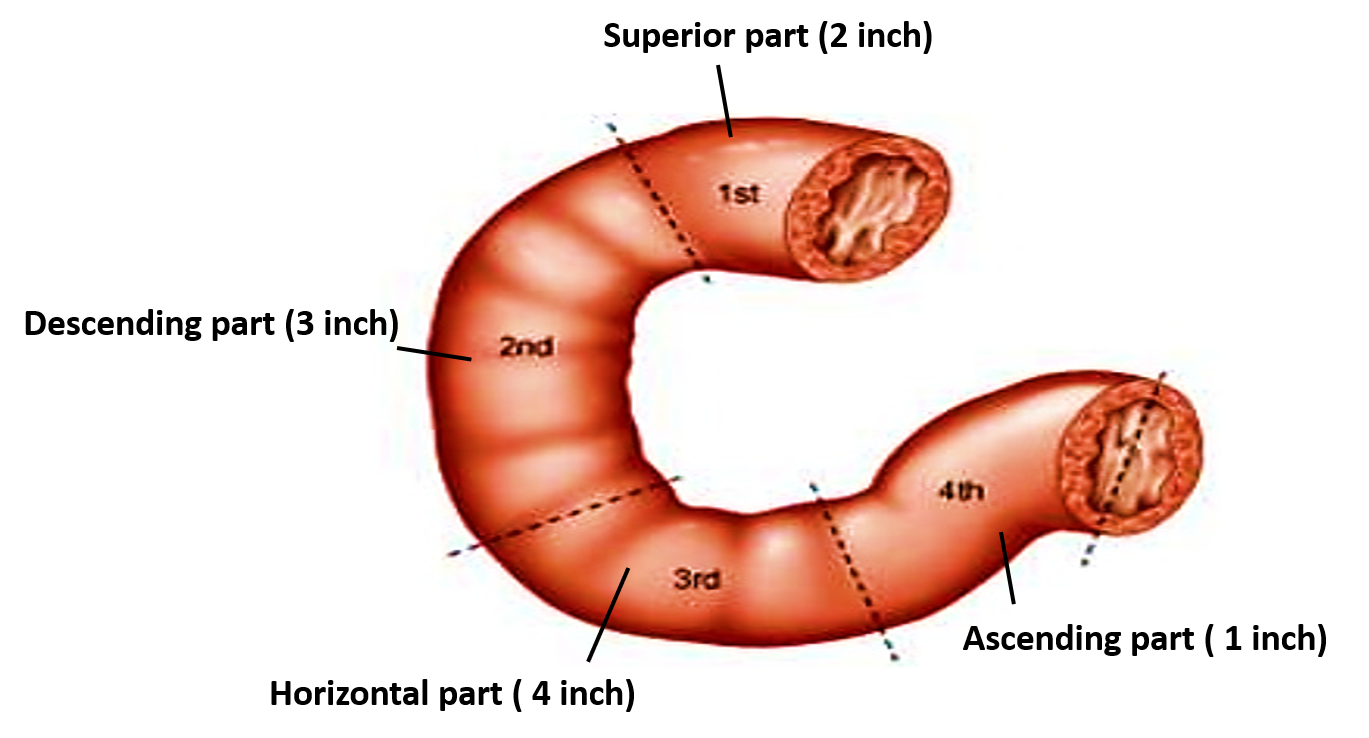
What are the characteristic features of first part of duodenum?
1st part of the duodenum :
- Is the most movable part
- Is supplied by end arteries
- Is devoid of circular folds.
- Is most commonly affected by peptic ulcer.
What is Duodenal cap?
A triangular radio-opaque shadow known as duodenal cap is observed in the 1st part of the duodenum after the barium meal. It is produced because the 1st part is kept patent due to the protrusion of the pylorus and gets filled by barium meal. Moreover, this part has no circular folds, the interior is smooth. Any deformity in the duodenal cap indicates mainly ulcer.
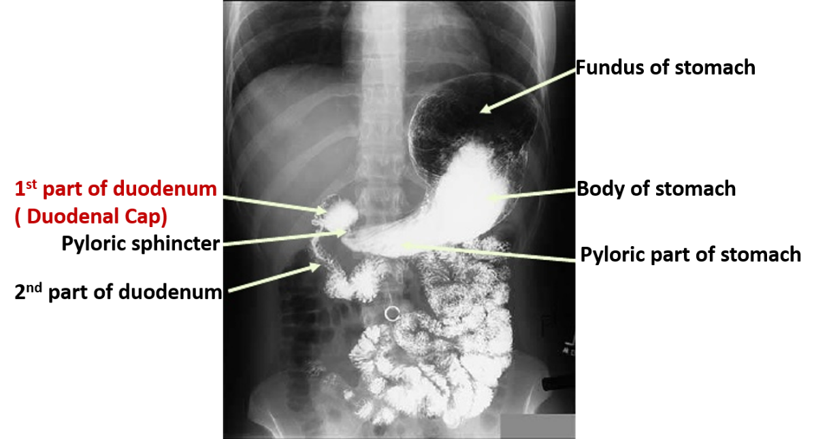
Describe the relations of duodenum.
Relations of first part of duodenum
- Anterior: Quadrate lobe of the liver and neck and body of the gall bladder.
- Posterior: Bile duct, portal vein and gastroduodenal artery. Behind all these inferior vena cava.
- Superior: Epiploic foramen and horizontal part of hepatic artery
- Inferior: Head and neck of the pancreas.
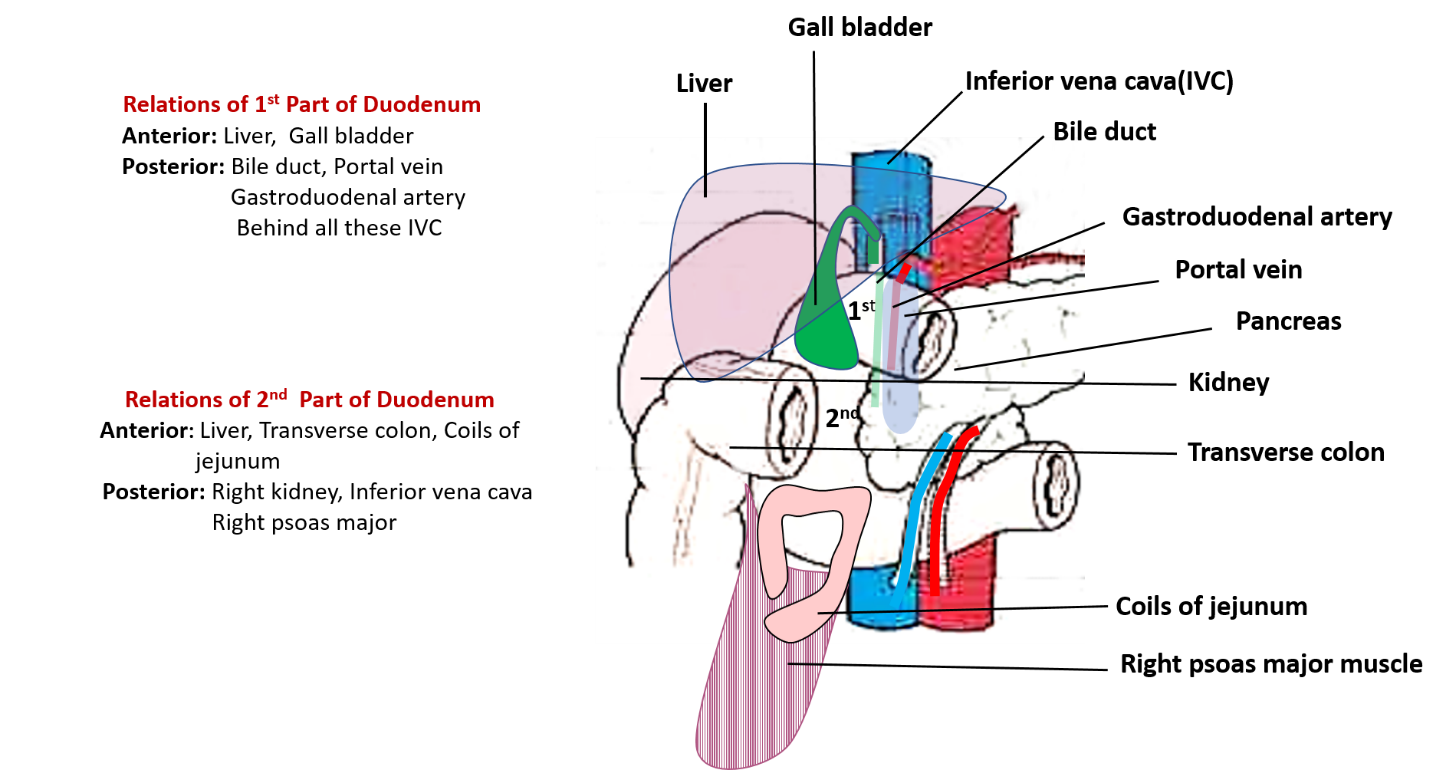
Relations of the second part of duodenum
- Anterior: Right lobe of liver,transverse colon, coils of jejunum
- Posterior: Right kidney (near the hilum), inferior vena cava, right psoas major
- Lateral : Right colic flexure
- Medial: Head of pancreas, bile duct, main and accessory pancreatic duct.
Relations of third part of duodenum
- Anterior: Superior mesenteric vessels and root of mesentery
- Posterior: Right psoas major, right ureter and right gonadal vessels, inferior vena cava , abdominal aorta and origin of inferior mesenteric artery.
- Superior: Head of pancreas
- Inferior: Coils of jejunum
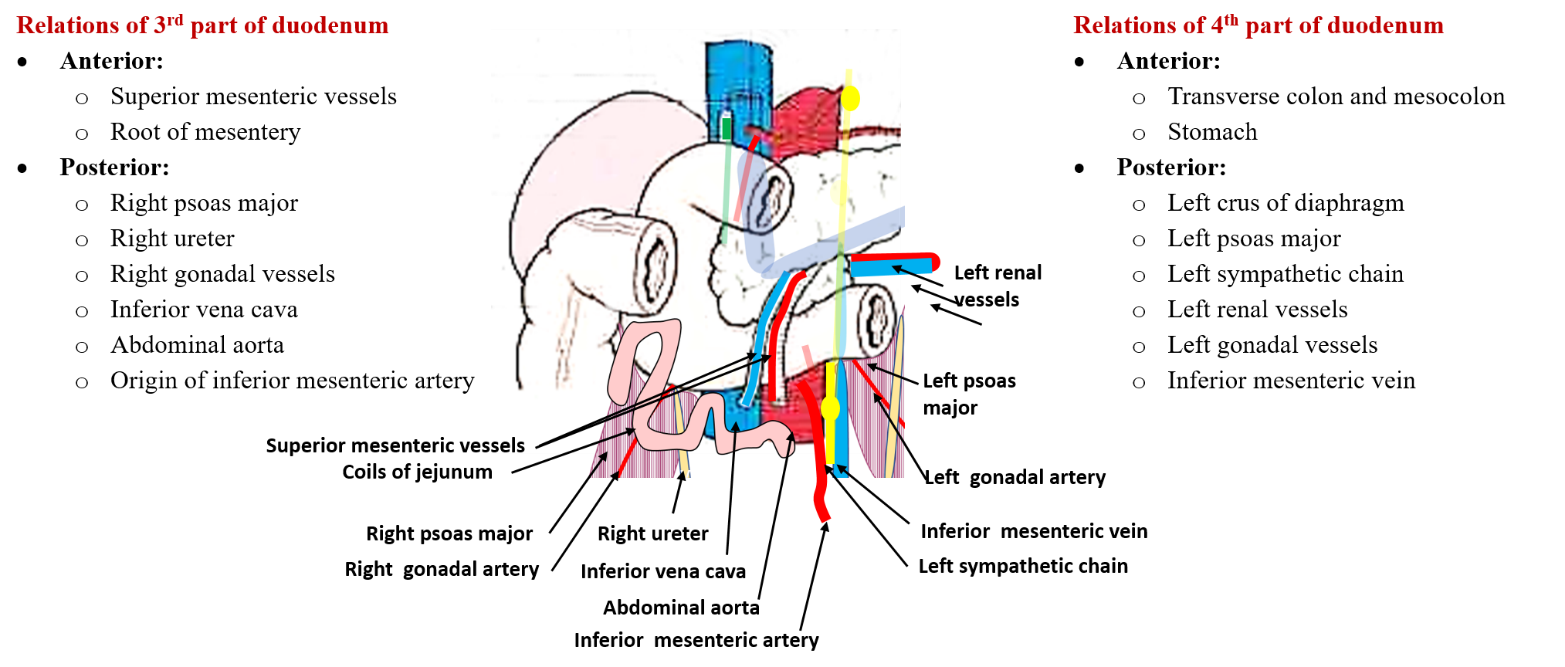
Relations of fourth part of duodenum
- Anterior: Transverse colon and mesocolon and stomach.
- Posterior: Left crus of diaphragm, left psoas major, left sympathetic chain, left renal vessels, left gonadal vessels, inferior mesenteric vein.
- Right: Uncinate process of pancreas.
- Left: Left kidney and ureter.
- Superior: Body of the pancreas.
Describe the interior of the second part of duodenum.
Two elevations are present along the posteromedial aspect.
- Major duodenal papilla: is a conical elevation situated 8-10cm from the pyloric end of the stomach. Ampulla of Vater (fromed by union of bile duct and main pancreatic duct) opens on its summit. The opening is guarded by sphincter of Oddi.
- Minor duodenal papilla: is a small conical elevation about 2cm above the major duodenal papilla and accessory pancreatic duct opens on its summit
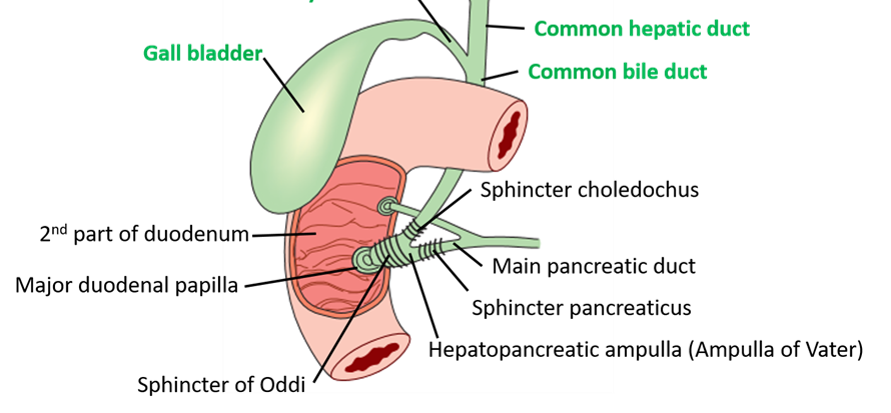
What is the suspensory ligament of Treitz?
It is a fibromuscular band that extends from the posterosuperior surface of duodeno-jejunal flexure to the right crus of the diaphragm.
Upper 1/3rd consists of striated muscle, middle third of elastic fibers and lower third of smooth muscle.
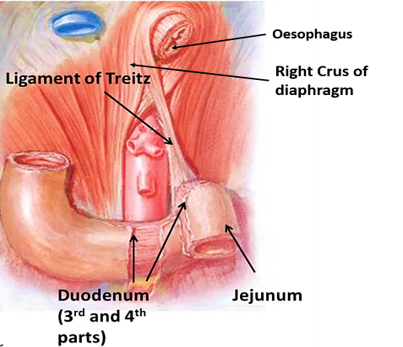
Describe the arterial supply of duodenum.
Above the level of opening of bile duct, duodenum is supplied by superior pancreatico-duodenal artery and below by inferior pancreatico-duodenal artery.
First part of duodenum receives additional supply from:
- Right gastric artery
- Supraduodenal artery (branch of hepatic artery)
- Retroduodenal artery ( branch of gastroduodenal artery)
- Right gastroepiploic artery.
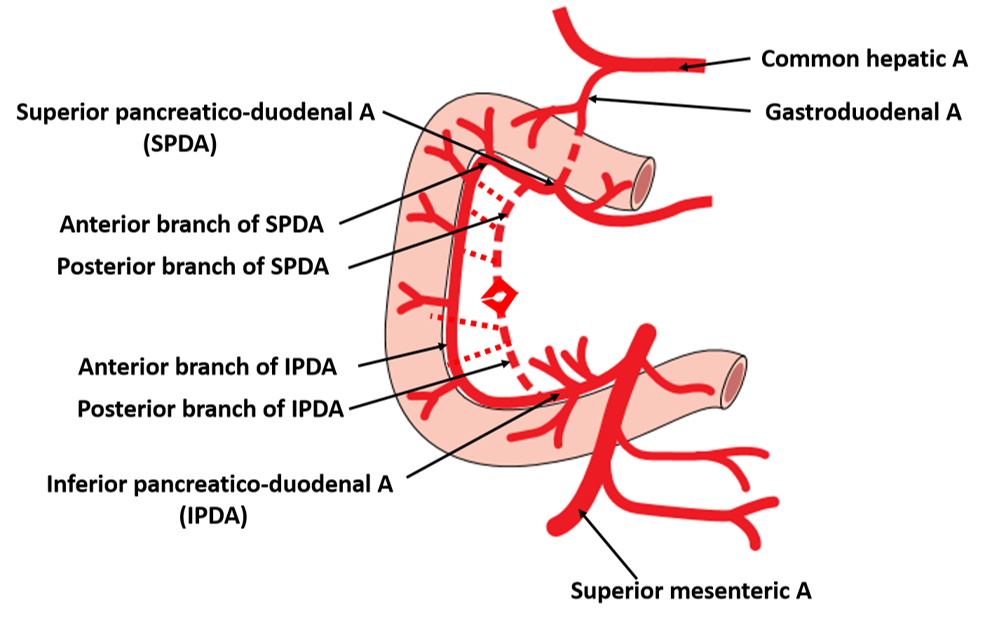
Duodenum develops from both foregut and midgut, therefore it is supplied by the branches of arteries of foregut (celiac trunk) and midgut (superior mesenteric artery).
Applied Aspects
Duodenal obstruction
Annular pancreas
It is a rare condition in which pancreatic tissue encircles the 2nd part of the duodenum, causing duodenal obstruction It occurs due to abnormal embryological development. It can result from growth of a bifid ventral pancreatic bud around the duodenum. Instead of going dorsal to the duodenum to fuse with the dorsal bud, the two parts of the bifid ventral bud surround the duodenum, forming a pancreatic ring.
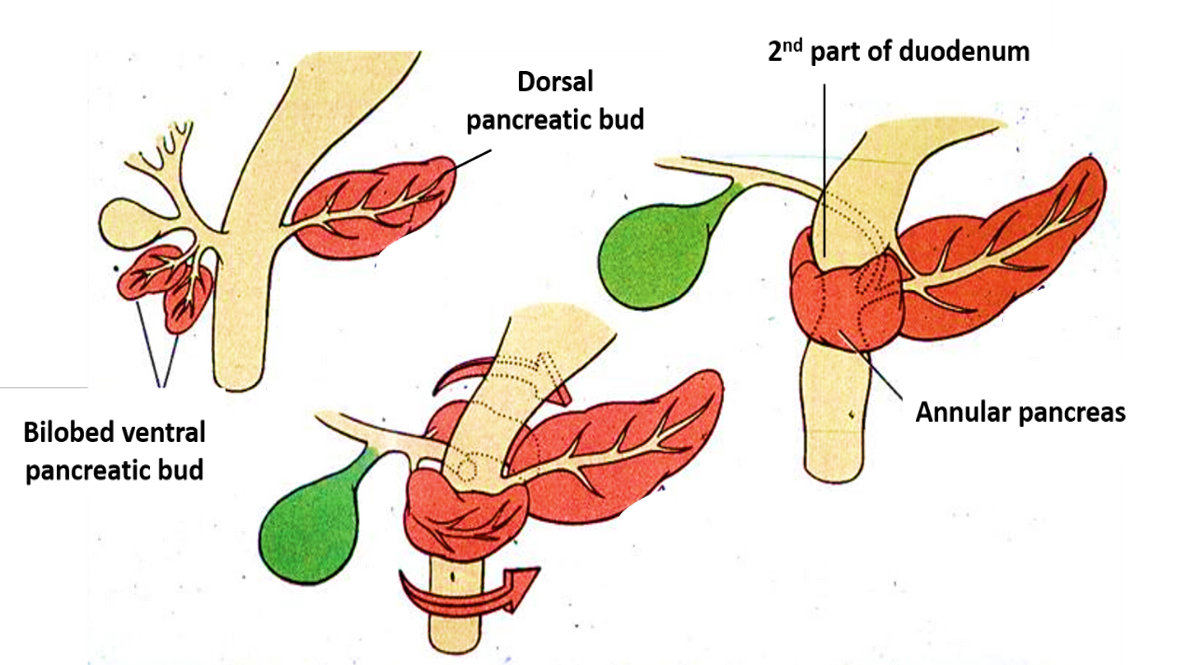
Wilke’s syndrome
It is another rare cause of partial or complete duodenal obstruction due to external compression of the third part of the duodenum by the superior mesenteric artery.
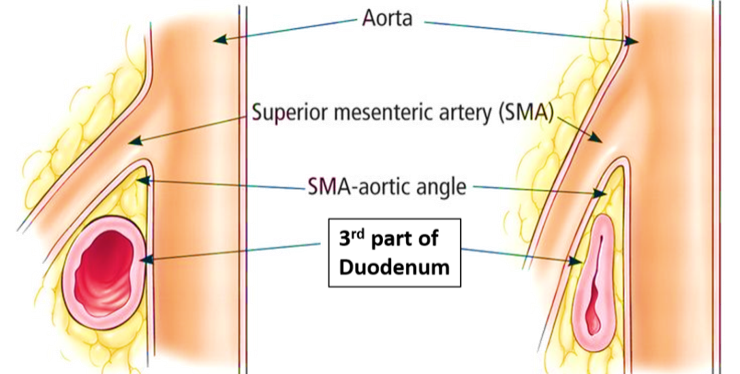

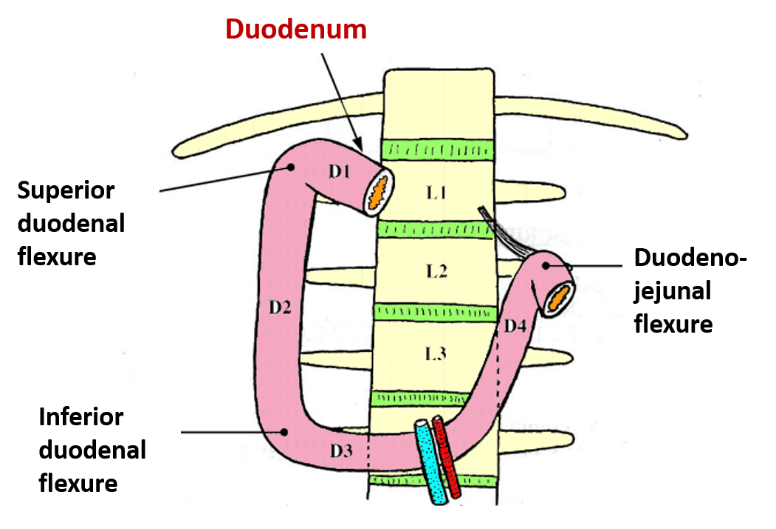
Thank you it’s very useful to me
Thank you so much. Very useful description.